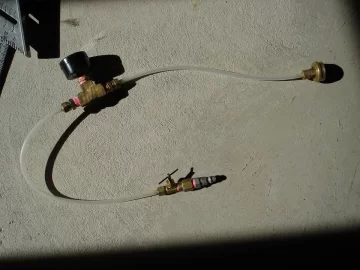I was thinking of replacing the baseboard emitters on the second floor with Heating Edge units of identical size with the eye towards operating generally at a lower temperature for a future bio source, and more efficiency and faster response from setback (on oil currently). There are two zones, upstairs and downstairs, 1000 ft2 each, well insulated. I am assuming they are piped serially.
What would the issues I might run in to, other than burning down the house while sweating pipe and paying for the things?
What would the issues I might run in to, other than burning down the house while sweating pipe and paying for the things?


